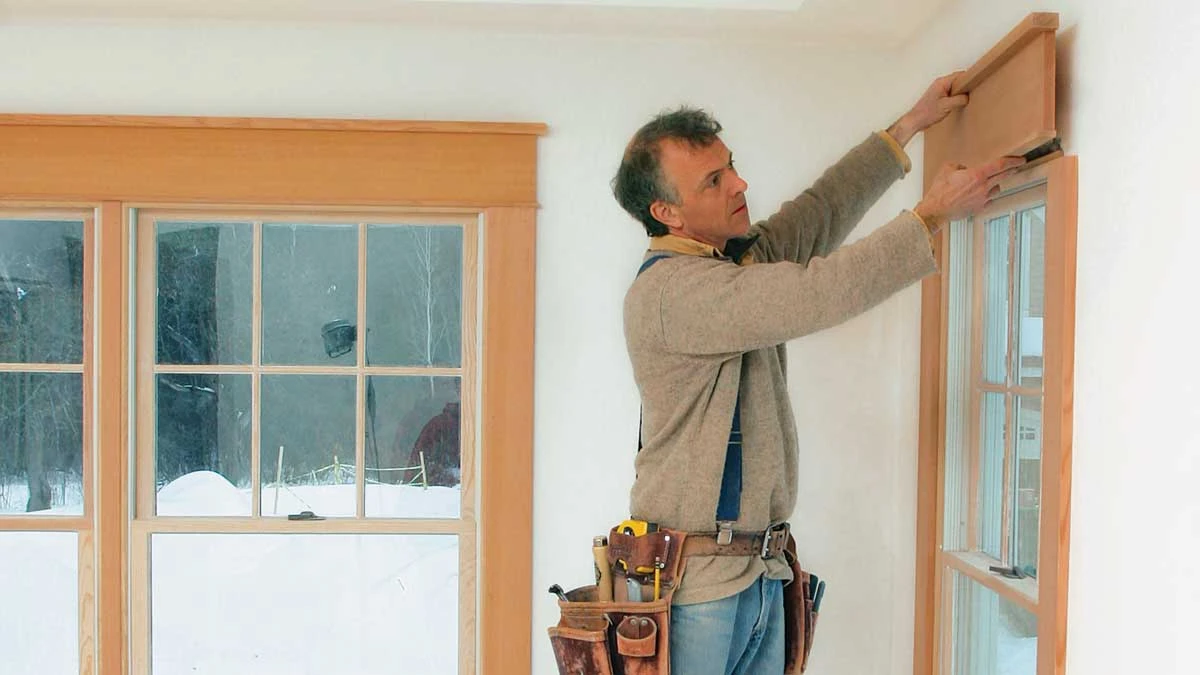Cutting window casing for maximum durability is essential for ensuring the longevity and functionality of your windows. You can successfully enhance your windows’ overall lifespan and performance by understanding the importance of adequately cutting window casing, using the right tools, following a guide, and implementing tips to achieve maximum durability while avoiding common mistakes.
Understanding Window Casing
Window casing is the trim surrounding a window, adding a decorative touch while concealing gaps between the window frame and the wall. It serves functional and aesthetic purposes, providing a finished look to your windows. Understanding the different types of window casings available can help you choose the best option for your space.
The two main types of window casing are interior and exterior casing. Interior casing is visible inside your home and often features intricate designs to complement your interior decor. On the other hand, the exterior casing is exposed to external elements like weather conditions and needs to be durable and weather-resistant.

Importance of Properly Cutting Window Casing
When it comes to installing window casing, the importance of cutting it properly cannot be overstated. A well-cut window casing enhances the aesthetic appeal of your windows and plays a crucial role in ensuring their durability and longevity.
Improperly cut window casing can lead to gaps between the casing and the wall, allowing drafts to enter your home and compromising energy efficiency. This can increase heating and cooling costs as your HVAC system works harder to maintain a comfortable temperature indoors.
Poorly cut window casing may not provide adequate support for the window itself, leading to structural issues over time. By measuring accurately and making precise cuts, you can ensure that your window casing fits snugly, providing proper insulation and support for your windows.
Tools Needed for Cutting Window Casing
When cutting window casing for maximum durability, having the right tools is critical. You’ll need a few essential items to ensure a clean and precise cut that will stand the test of time.
First, a good-quality miter saw is indispensable for cutting accurate angles in your window casing. Make sure it’s sharp and properly calibrated before getting started.
A measuring tape or ruler is crucial for marking out the dimensions of your cuts precisely. Accurate measurements will help you avoid mistakes and ensure a perfect fit around your windows.
Guide for Cutting Window Casing
When it comes to cutting window casing for maximum durability, precision is critical. Begin by accurately measuring the length needed for each side of the window frame. Use a high-quality miter saw with a sharp blade to ensure clean and straight cuts.
Before making any cuts, mark the measurements on the casing using a pencil or painter’s tape. Double-check your marks to avoid mistakes that could affect the final fit of the casing around the window.
When cutting the angles for corners, be sure to set your miter saw at the correct angle according to your measurements. Take your time and make slow, deliberate cuts to maintain accuracy throughout the process.
For inside corners, remember that one piece should have an inside 45-degree angle while its mate has an outside 45-degree angle for a seamless fit when installed together. When it comes to mastering this technique, practice makes perfect.
Always wear safety goggles and gloves when using power tools like miter saws. Safety should never be compromised in the pursuit of perfection in craftsmanship.
Tips for Achieving Maximum Durability
When achieving maximum durability for your window casing, there are a few tips you can follow to ensure longevity and strength. Choosing high-quality materials is crucial. Opting for sturdy wood or durable PVC can significantly affect the lifespan of your window casing.
Properly sealing and painting your window casing can help protect it from moisture and other elements that could cause damage over time. Make sure to apply multiple coats of paint and sealant for added protection.
Regular maintenance is also vital in ensuring the durability of your window casing. Inspect it periodically for any signs of wear or damage, and address any issues promptly before they escalate into more significant problems.
Consider adding extra reinforcement, such as metal brackets or corner braces, for additional support, especially if you live in an area prone to harsh weather conditions. By following these tips, you can enhance the durability of your window casing and prolong its lifespan significantly.
Common Mistakes to Avoid
When cutting window casing for maximum durability, you’ll want to avoid some common mistakes. One of the most frequent errors is measuring accurately after cutting. This can lead to gaps or uneven lengths, affecting the overall look and functionality of your window casing.
A mistake is not using the right tools for the job. Sharp and appropriate tools, such as a miter or coping saw, are essential to ensure clean and precise cuts. Dull or incorrect tools can result in jagged edges and compromised structural integrity.
Rushing through the cutting process can lead to careless mistakes. Before making any cuts, double-check your measurements. Precision is critical when it comes to achieving durable and professional-looking window casing.
Neglecting proper safety measures while cutting window casing can be a dangerous oversight. Always wear protective gear like goggles and gloves to prevent accidents and injuries during cutting.




